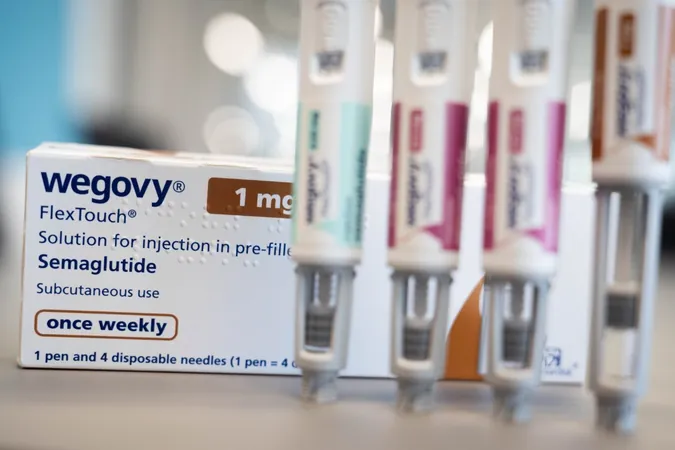
Over 136 Million Americans Could Benefit from Ozempic, New Study Reveals!
2024-11-19
Author: Wai
Groundbreaking Study Findings
A recent groundbreaking study has unveiled a staggering truth: over half of U.S. adults are eligible for semaglutide, the key component in the trending medications Ozempic and Wegovy. Conducted by scientists from Harvard and various institutions, this research aims to highlight the broad potential of these hugely popular drugs, which many believe are underprescribed.
Eligibility and Impact
According to the nationally representative survey data analyzed, approximately 136.8 million American adults meet the criteria for semaglutide therapy. While most of these eligible individuals would primarily use the medication for obesity management, a significant portion—around 30 million—would benefit from its use in combatting type 2 diabetes or reducing cardiovascular disease risks, both of which lead to premature mortality and increased healthcare expenses.
Public Health Implications
The researchers emphasize this vast pool of eligible individuals could have profound implications for public health and pharmaceutical costs. In their paper published in JAMA Cardiology, they wrote, 'The large number of U.S. adults eligible for semaglutide highlights its potential impact on pharmaceutical spending and population health.'
Efficacy of Semaglutide
Semaglutide and other GLP-1 receptor agonists have demonstrated superior efficacy for weight management compared to traditional methods like diet and exercise alone. Despite potential side effects and variable effectiveness among users, ongoing studies continue to reinforce the advantages of these medications for not only addressing obesity but also for treating conditions such as substance use disorders.
Affordability Issues
However, affordability remains a significant hurdle. The average monthly price tag for Wegovy is around $1,300, while Ozempic retails for approximately $1,000. Unfortunately, many health insurance programs, whether public or private, do not typically cover these medications, largely due to their high costs. This situation has fueled the rise of an illicit market, where individuals often seek cheaper, unapproved versions that may pose safety risks.
Prescription Rates
Recent survey results indicate that only about 12% of Americans have received prescriptions for GLP-1 drugs, with only 6% actively using them. Despite the immense popularity of these medications leading Novo Nordisk—makers of Wegovy and Ozempic—to generate over $50 billion in revenue this year, this figure falls tragically short of the estimated number of eligible users identified in the study.
Healthcare Program Implications
Many who have recently started using GLP-1 medications report difficulties affording them, even when insurance coverage is available. This shift has significant implications for public healthcare programs like Medicare, which might enforce restrictive eligibility criteria due to the high prices, as they can only cover these medications for diabetes or heart disease treatment due to regulatory limitations.
Need for Financial Interventions
The researchers stress that addressing the financial barriers to accessing these treatments is crucial, stating, 'More than half of U.S. adults who have taken GLP-1 receptor agonists report the therapy was difficult to afford, prompting the urgent need for interventions to lessen economic barriers to access.'
Conclusion and Future Outlook
While it's important to recognize that not all eligible Americans may require semaglutide or choose to use it even if cost were not an issue, the large discrepancy between the actual and potential users suggests a missed opportunity for significant health improvements. An October study found that increasing the uptake of GLP-1 drugs could potentially avert 42,000 deaths each year in the U.S. attributed to obesity and diabetes-related complications.
The insights from this study may well reshape treatment strategies and policy frameworks moving forward, as a growing population seeks viable options to improve their health and well-being amid an ongoing obesity epidemic. Stay tuned for updates as the conversation around these life-changing medications evolves!


 Brasil (PT)
Brasil (PT)
 Canada (EN)
Canada (EN)
 Chile (ES)
Chile (ES)
 España (ES)
España (ES)
 France (FR)
France (FR)
 Hong Kong (EN)
Hong Kong (EN)
 Italia (IT)
Italia (IT)
 日本 (JA)
日本 (JA)
 Magyarország (HU)
Magyarország (HU)
 Norge (NO)
Norge (NO)
 Polska (PL)
Polska (PL)
 Schweiz (DE)
Schweiz (DE)
 Singapore (EN)
Singapore (EN)
 Sverige (SV)
Sverige (SV)
 Suomi (FI)
Suomi (FI)
 Türkiye (TR)
Türkiye (TR)